Land Lease Agreement Samples
-

Industrial Land Lease Agreement
download now -

Legal Land Lease Agreement
download now -

5-Year Land Lease Agreement
download now -

Land Rental Lease Agreement
download now -
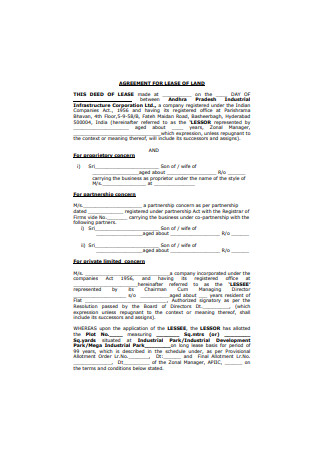
Agreement for Lease of Land
download now -
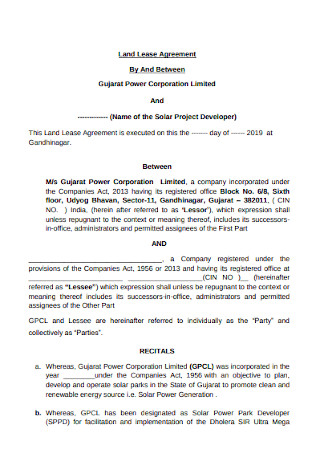
Land Lease Agreement
download now -

Lease Agreement for Land
download now -

Land Lease Agreement Sample
download now -

Commercial Land Lease Agreement Sample
download now -

Farm Land Lease Agreement
download now -

Commercial Land Lease Agreement
download now -

Land Lease Agreement Example
download now -

Basic Land Lease Agreement
download now -

Land Lease Agreement Format
download now -
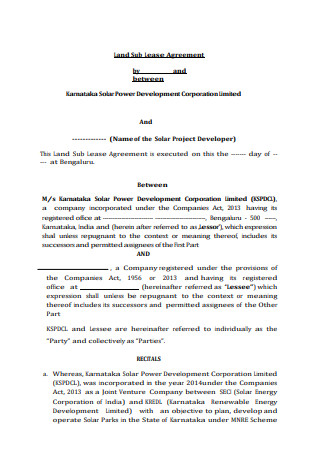
Land Sub Lease Agreement
download now -

Agricultural Land Lease Agreement
download now -

Hunting Land Lease Agreement
download now -

Agricultural Land Lease Agreement Sample
download now -

Sample Land Lease Agreement
download now -
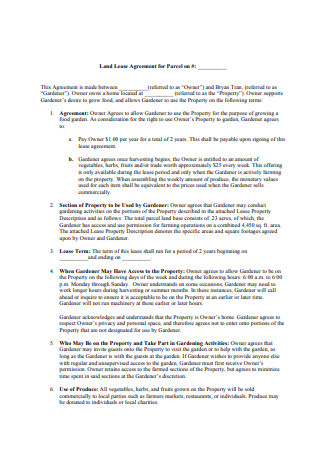
Basic Land Lease Agreement Sample
download now -

Simple Land Lease Agreement
download now -

Farm Land Lease Agreement Sample
download now -

Private Hangar Land Lease Agreement
download now -

Vacant Land Lease Agreement
download now -

Standard Land Lease Agreement
download now -

Property Lease Agreement Sample
download now -

Residential Property Lease Agreement
download now -

Commercial Property Lease Agreement
download now -

Lease Agreement for Landing Property
download now -

Residential Real Property Lease Agreement Sample
download now -
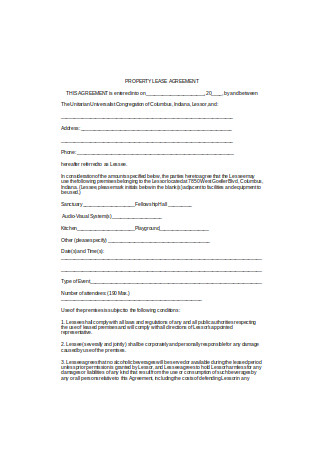
Basic Property Lease Agreement
download now -

Property Lease Agreement Format
download now
FREE Land Lease Agreement s to Download
Land Lease Agreement Format
Land Lease Agreement Samples
What is a Land Lease Agreement?
Purposes of a Land Lease Agreement
Types of Land Lease Agreements
How to Create a Land Lease Agreement
FAQs
Is going into the business of land leasing profitable?
What is a leasehold?
Who uses ground lease agreements?
How does a Land Lease Agreement differ from a Property Lease?
Can I terminate a Land Lease Agreement before it expires?
What happens if the tenant fails to pay rent on time?

Download Land Lease Agreement Bundle
Land Lease Agreement Format
This Land Lease Agreement (“Agreement”) is made and entered into on [Date] by and between:
- Lessor (Landowner): [Full Name], residing at [Address], hereinafter referred to as the “Lessor.”
- Lessee (Tenant): [Full Name], residing at [Address], hereinafter referred to as the “Lessee.”
Lessor and Lessee may be referred to individually as a “Party” or collectively as the “Parties.”
1. DESCRIPTION OF THE LAND
- Location: [Address/Description of Land Location]
- Size/Area: [Size in square meters/feet or acres]
- Boundaries: [Specify North, South, East, and West boundaries]
- Purpose of Lease: [e.g., Agricultural, Residential, Commercial, or Industrial Use]
2. TERM OF LEASE
- Start Date: [Start Date]
- End Date: [End Date]
- Lease Renewal Option: [Yes/No] (If yes, specify renewal period, terms, and notice requirements)
3. RENTAL AMOUNT AND PAYMENT TERMS
- Monthly/Annual Rent: [Amount in local currency]
- Due Date: [Specify due date for payment, e.g., 1st of each month]
- Payment Method: [Bank transfer, Cash, Check, etc.]
- Late Payment Penalty: [Late fees if applicable]
4. SECURITY DEPOSIT
- Deposit Amount: [Amount in local currency]
- Purpose of Deposit: Security for damage, unpaid rent, or other breaches of this Agreement.
- Refund Conditions: [When and how the security deposit will be refunded]
5. USE OF THE LAND
- Permitted Use: [Agriculture, residential, commercial, etc.]
- Prohibited Use: [Any activities that are restricted, e.g., no hazardous materials, no subleasing, etc.]
6. MAINTENANCE AND REPAIRS
- Lessor’s Responsibilities: [e.g., Major repairs, structural issues, etc.]
- Lessee’s Responsibilities: [e.g., Daily maintenance, cleanliness, etc.]
7. UTILITIES AND TAXES
- Utility Bills: Responsibility of [Lessor/Lessee]
- Property Taxes: Responsibility of [Lessor/Lessee]
8. INSURANCE
- Lessee Insurance: The Lessee is required to maintain liability insurance with coverage of [Amount] for the duration of the lease.
- Lessor Insurance: The Lessor will ensure property insurance for the land itself.
9. ALTERATIONS AND IMPROVEMENTS
- Permission Required: Lessee must obtain written consent from the Lessor before making any alterations or improvements to the land.
- Ownership of Improvements: [Specify if improvements revert to the Lessor or remain with the Lessee.]
10. SUBLEASING AND ASSIGNMENT
- Subleasing: [Allowed/Not Allowed]
- Assignment: [Allowed/Not Allowed]
11. DEFAULT AND TERMINATION
- Events of Default: [Failure to pay rent, unauthorized use, etc.]
- Notice of Default: [Specify the notice period (e.g., 15 days) to remedy the default.]
- Early Termination: [Under what circumstances the lease can be terminated early.]
12. DISPUTE RESOLUTION
- Governing Law: This Agreement shall be governed by the laws of [State/Country].
- Arbitration/Mediation Clause: [Include if applicable.]
13. FORCE MAJEURE
- If an event beyond the control of the Parties (natural disaster, war, etc.) prevents the performance of this Agreement, the affected Party may suspend performance.
14. INDEMNIFICATION
- The Lessee agrees to indemnify and hold harmless the Lessor from any claims, damages, or liabilities that arise from the Lessee’s use of the land.
15. ENTIRE AGREEMENT
- This Agreement constitutes the entire understanding between the Parties. No other terms or conditions, whether written or oral, shall apply unless agreed upon in writing by both Parties.
16. AMENDMENT AND MODIFICATION
- Any amendment or modification of this Agreement must be made in writing and signed by both Parties.
17. SIGNATURES
Lessor (Landowner):
Signature: _________________________
Name: [Lessor Name]
Date: [Date]
Lessee (Tenant):
Signature: _________________________
Name: [Lessee Name]
Date: [Date]
Witness 1:
Signature: _________________________
Name: [Witness 1 Name]
Date: [Date]
Witness 2:
Signature: _________________________
Name: [Witness 2 Name]
Date: [Date]
What is a Land Lease Agreement?
A land lease agreement is a legal document that allows the owner of a piece of land to rent that land to another person or company. The rented piece of land can be used for various reasons, including but not limited to, farming or agriculture, commercial reasons such as putting up advertisements on the freeway, or for land development such as building restaurants, hotels, etc. You can also see more on Standard Lease Agreement.
It is also known as a land agreement or ground lease agreement. The lease agreement is a land rental contract that allows the renter to occupy real estate comprised of only dirt and soil. The tenant can use the land for multiple reasons such as agricultural, commercial, or residential, among others.
Purposes of a Land Lease Agreement
- Legal Protection: Ensures the rights and responsibilities of both the landowner and tenant are clearly defined and enforceable.
- Clarity on Land Usage: Specifies the permitted use of the land (agriculture, commercial, or residential) to avoid misuse.
- Payment Terms and Schedules: Outlines rent payment amounts, schedules, and methods to prevent payment disputes.
- Obligations and Responsibilities: Defines maintenance, tax, and repair duties for both the landowner and tenant.
- Termination and Renewal Guidelines: Establishes terms for lease renewal, early termination, and notice periods for both parties. You can also see more on Commercial Lease Agreements.
Types of Land Lease Agreements
- Agricultural Lease: Used for leasing land for farming, grazing, or growing crops, often with specific terms for seasonal usage or revenue sharing.
- Commercial Lease: Involves leasing land for commercial purposes like setting up shops, offices, or business operations.
- Residential Lease: Used to lease land for residential purposes, such as placing mobile homes or temporary housing structures.
- Ground Lease: Allows the tenant to develop the land (e.g., construct buildings) while the landowner retains ownership of the land. You can also see more on Sublease and Lease Agreements.
- Industrial Lease: Used for leasing land for industrial purposes, such as setting up factories, warehouses, or production facilities.
How to Create a Land Lease Agreement

Step 1: Identify the Parties
The first step is to list the names of the parties involved — the landowner (lessor) and the tenant (lessee). Ensure their full legal names and contact details are included to avoid future disputes. You can also see more on Month-to-Month Rental or Lease Agreements.
Step 2: Describe the Property
Provide a clear description of the land being leased. Include the physical address, size, and any landmarks that help identify the property. If possible, attach maps or drawings for accuracy.
Step 3: Specify the Lease Terms
Detail the lease period (start and end dates) and payment terms, including the rent amount, frequency (monthly, quarterly, annually), and accepted payment methods. If applicable, include late payment penalties.
Step 4: Define Permitted Usage
Clearly define the purpose for which the land is being leased. Specify whether it’s for agriculture, commercial, residential, or other purposes. Also, list activities that are prohibited on the property. You can also see more on Option to Lease Agreement.
Step 5: Outline the Rights and Obligations
List the rights and obligations of both parties. This includes maintenance, insurance, and taxes. For example, clarify whether the tenant can sublease the property or make improvements.
A Land Lease Agreement is essential for smooth land usage, outlining clear roles, responsibilities, and expectations for both the landowner and tenant. It protects legal rights, defines usage terms, and ensures fair rent payments. By including key details like property description, rent schedule, and permitted usage, this agreement minimizes disputes and promotes trust. Whether for farming, business, or residential use, a well-structured land lease agreement ensures both parties have clarity, security, and confidence in their arrangement. You can also see more on Standard One Year Lease.
FAQs
Is going into the business of land leasing profitable?
Leasing is one of the most common alternative forms of land tenure. It allows owners to retire early and still get a steady income stream for a specific period and gives the lessee quick access to land to scale up their operations without having to shell out capital for land purchase. Given these situations, it is a win-win situation for both the landowner and the tenant.
What is a leasehold?
A leasehold is an accounting term that refers to an asset or property that the tenant wants to rent from the land or property owner. In other words, the piece of land that a lessor will be renting from the lessor for an agreed-upon time in exchange for a scheduled payment scheme. Leasehold improvements are usually made within the interiors of a building and any exterior improvements are not considered as such. You can also see more on Warehouse Lease Agreement.
Who uses ground lease agreements?
This type of deal can be used in many situations, including:
- Farmers who need fertile land to raise livestock or grow crops
- Businesses who want to construct their own building on prime locations but unable to acquire or purchase one a site.
- Companies who need to build structures essential to their business such as cell towers, windmill, and other structures.
How does a Land Lease Agreement differ from a Property Lease?
A Land Lease Agreement focuses solely on the land, not the buildings or structures on it. Property leases, on the other hand, typically include both the land and any existing structures like houses or buildings. Land leases are used for purposes like agriculture, commercial development, or mobile home sites. You can also see more on Rental Agreements.
Can I terminate a Land Lease Agreement before it expires?
Yes, but it depends on the termination clause in the agreement. If early termination is allowed, the process is usually specified in the contract. Tenants may have to give notice or pay a fee to break the lease early. Without a termination clause, it may be more difficult to end the agreement.
What happens if the tenant fails to pay rent on time?
The agreement should include a late payment clause. If the tenant fails to pay rent, the landlord can charge a late fee, issue a notice of default, or terminate the lease if payments are consistently missed. The terms should be clearly outlined in the contract. You can also see more on Lease Contract.
